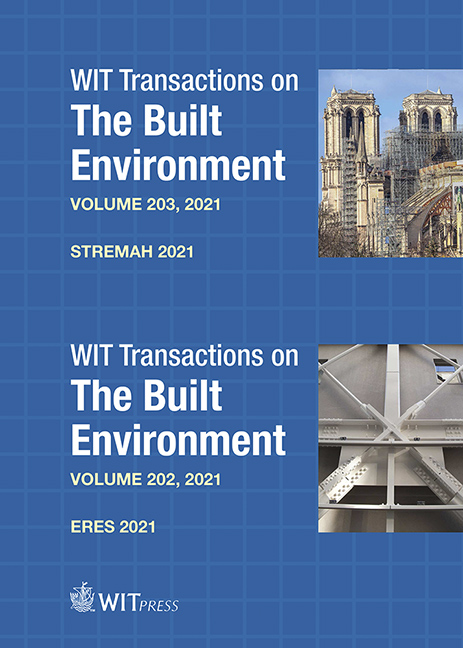TOWARDS A SUSTAINABLE RE-CONSTRUCTION METHOD FOR SEISMIC-PRONE HERITAGE SETTLEMENTS OF GUJARAT, INDIA, BASED ON ADVANCED RECORDING TECHNOLOGIES
Price
Free (open access)
Transaction
Volume
203
Pages
13
Page Range
185 - 197
Published
2021
Size
3,013 kb
Paper DOI
10.2495/STR210161
Copyright
Author(s)
BERNADETTE DEVILAT, JIGNA DESAI, ROHIT JIGYASU, MOHAMED GAMAL ABDELMONEM, FELIPE LANUZA, MRUDULA MANE
Abstract
Post-earthquake reconstruction of housing in heritage settlements confronts challenges such as inadequate damage assessment and replacement, displaced population and loss of heritage significance. Recording the built fabric and ways of life within heritage settlements are key for conserving their historic value, which is increasingly possible with the evolution of digital technologies. This paper presents an ongoing research project developing a novel methodology for heritage conservation and post-disaster re-construction using state-of-the-art 3D-laser-scanning (LiDAR) technologies to enable comprehensive damage assessment and design of solutions for repair, retrofitting, reuse and disaster risk mitigation, facilitating community empowerment, while virtually preserving the living heritage of vernacular settlements in Kutch, Gujarat. Through the development of a scalable method of re-construction, the aim is to break the unsustainable cycle of buildings' replacement, dereliction and subsequent loss of heritage, advancing from previous research in Chile. Key aspects of vernacular architecture in Kutch are presented alongside the critical evaluation of previous experiences of postearthquake reconstruction in the region, introducing the challenges from the LiDAR data capture done so far. The early findings show the potential of the record as fast and accurate documentation of complex living settings, incorporating the technical information required of each house within the contextual information of its surroundings – even when working remotely – where complementary social, archival and historical information can be placed and analysed.
Keywords
earthquakes, reconstruction, heritage conservation, 3D-laser-scanning, LiDAR, Kutch, India, risk mitigation, vernacular architecture, re-construction




